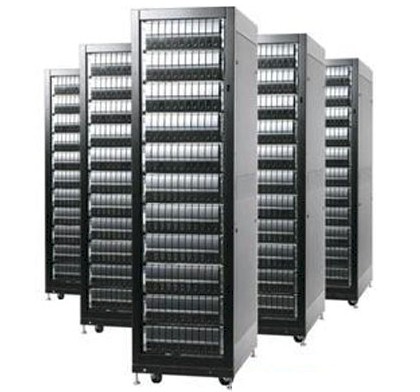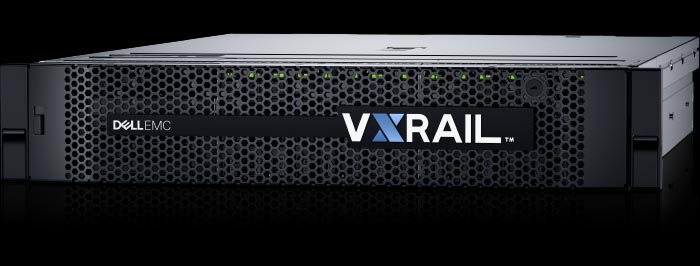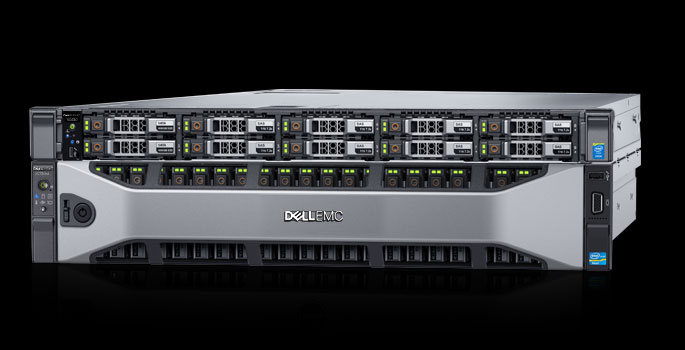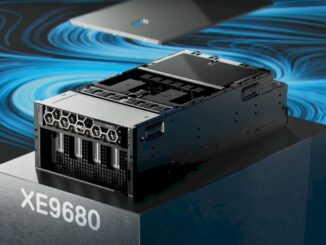
Hyperconverged infrastructure is a relatively small but fast-growing part of the datacenter market, driving in large part by enterprises looking to simplify and streamline their environments as they tackle increasingly complex workloads.
Like converged infrastructure, hyperconverged offerings are modular in nature, converging compute, storage, networking, virtualization and management software into a tightly integrated single solution that drives greater datacenter densities, smaller footprints, rapid deployment and lower costs. They are pre-built, pre-validated before shipping from the factory, eliminating the need for the user to do the necessary and time-consuming integration. Hyperconverged merges the compute and storage into a single unit, and management is done at the virtualization layer.
Over the past couple of years, OEMs have made aggressive pushes into the hyperconverged space as enterprises begin to adopt them for at least part of their infrastructure environments, particularly as they move to grow their private cloud capabilities. Dell EMC is in the market with several offerings based on its PowerEdge servers, in particular with its VxRail, which includes VMware Virtual SAN (vSAN) and vSphere server virtualization software. The lineup also includes its XC series that includes Nutanix hyperconverged software and a choice of hypervisors, and VxRack, a rack-scale hyperconverged solution. Cisco Systems has its HyperFlex systems that include technology from Springpath, which Cisco bought this year, while Hewlett Packard Enterprise entered the market when it bought Nutanix rival SimpliVity this year for $650 million. Other competitors in the space include Atlantis Computing, HyperGrid, Huawei Technologies, Pivot3, Scale Computing, and Stratoscale.
Hypercoverged infrastructure initially targeted virtual desktop infrastructures (VDI), but over the past year or so has attracted more enterprise-level workloads. A key driver in the market now are businesses looking for alternatives to their traditional SAN- and NAS-based storage environments. These companies are looking at software-defined storage (SDS) solutions that bring with them greater IT agility, lower capital costs through the use of more off-the-shelf hardware, and more automated management. Within the SDS space, hyperconverged infrastructure is the fastest-growing segment.
None of this is news to the folks at Dell EMC.
“That is the dynamic we’re seeing,” Chad Dunn, vice president of product marketing, tells The Next Platform. “If you look at any analyst coverage, if you look at earnings calls of public companies that are in this space, primary storage as a market is shrinking, and where is that data going? Because there’s clearly not less data. It goes to two places. It goes to the public cloud and it goes to hyperconverged. We still see a lot of these workloads still staying on-premises, but the data is simply moving over to hyperconverged storage from traditional. It’s much harder to contemplate the movement of the existing workloads that we all know and love – workloads like SQL Server and VDI ad other things like that – moving over to the public cloud, and the economics, once you really get into them, are not as compelling. So the logical choice is that they remain on-premises, but they move to platforms that are more imminently scalable, where you can go very large and where you’re going to lower your overall cost of ownership.”
Dell EMC this week released the latest version of its VxRail and XC series hyperconverged appliances based on the new 14th generation PowerEdge servers, which are powered by Intel’s 14-nanometer Xeon SP “Skylake” processors. They also include VMware’s vSAN and EMC’s ScaleIO, inherited after Dell’s $60 billion-plus acquisition last year of EMC. The new systems bring greater overall performance and improved storage capabilities to the solutions, including more support for solid-state drives (SSDs) in scale-out deployments, more streamlined data storage management and faster initialization, and support for software-defined NAS through Dell EMC’s Isilon SD Edge deployments. The XC systems come with new SSD/NVMe configurations.
The added performance and storage capabilities are what is helping to drive hyperconverged infrastructures deeper into the enterprise, Dell EMC’s Dunn said. Fewer companies want to separately manage their compute, SAN and virtualization layers, wanting instead to leverage what their IT systems can do for the business. In addition, they are always looking to shift money away from IT management and to other parts of the business.
“What they need is some kind of vehicle,” Dunn said. “We saw this sort of wave of workloads that rushed to hyperconverged as the architectures first started hitting the market. Not by the same leaps and bounds as VDI. It was typically greenfield applications. It was something a lot of times that was not as mission-critical as ERP systems and SAP and things like that, and it was typically isolated. A VDI pilot that went into production, where they said, ‘Let’s try it for a little bit.’ They started a few nodes and they started scaling up from there. That’s where there was the initial uptake, and that still represents about 30 percent of the business, but once the infrastructure started to reach the performance and availability that rivaled the traditional architectures, that’s when you saw those other workloads start to move.”
That inflection point started to hit about a year ago, with enterprises moving from isolated single workload deployments to multiple datacenter-level workloads, such as databases. There also were increasingly more integration efforts with the rest of the datacenter orchestration layers, and hyperconverged deployments were moving from greenfield to brownfield environments.
Dunn said he expects to see more adoption as companies reach the point of having to refresh their datacenter systems. Once there, they will consider hyperconverged infrastructures, and many will begin to move in that direction, drawn to the greater flexibility and automation and lower costs. However, while the hyperconverged business is among the fastest growing at Dell EMC, it’s still a relatively small part of the company’s overall storage business, including its high-end Isilon systems, he said.
It’s difficult to talk about percentages when looking at the growth rates of hyperconverged storage vs. the traditional system, Dunn said.
“We’re growing fast on a much smaller base,” he said. “If we look at our shipments of primary storage, we would know it’s shrinking, but we’re still shipping petabytes and petabytes of this stuff on a regular basis. If you look at VxRail, since we launched it just about seven quarters ago, we’ve got about 200 petabytes of overall storage on VxRail – I don’t know what the exact number is – but that’s a count of about 17,000 or 18,000 nodes that we’ve shipped since then.”
There are positive signs for the hyperconverged space, with prices of NAND flash going down and capacity increasing. The shortage of SSDs a year ago drove vendors to increase their manufacturing capabilities, so the market now is healthier, with supplies and capacity growing and prices dropping, Dunn said. In addition, Dell EMC is preparing to start shipping VxRail and XC appliances with NVMe capabilities next year, which will reduce the latency in the systems.
One area that has yet to embrace hyperconverged infrastructures is HPC, though that will probably change, he said.
“All the HCI solutions have a hypervisor and generally in HPC you’re going for a bare-metal performance and you want as close to real-time operations as you possibly can,” Dunn said. “Where that could start to change is in machine learning and artificial intelligence. You typically think of the internet-of-things intelligent edge use cases. There’s so much data being generated by this internet of things that the data itself is not valuable. The insight that the data provides you is exceptionally valuable, so it makes a lot of sense not to bring that data all the way back to the core. You want to put the data analytics and decision making of that data as close to the devices as you can, and then take the valuable insight and leave the particularly worthless data out where it is. What becomes interesting is the form factors that HCI can get to are relatively small. Where the machine learning piece comes in is what we expect to see and what we’re starting to see is people looking to leverage the graphical processor units in these platforms.”
Dell EMC offers Nvidia GPU accelerators in both VxRail and XC solutions, not only for video but also to augment machine learning algorithms. The company is just beginning to see demand for that now, Dunn said, noting that one of the largest deals for VxRail involves a large Splunk deployment for data analytics.







Be the first to comment